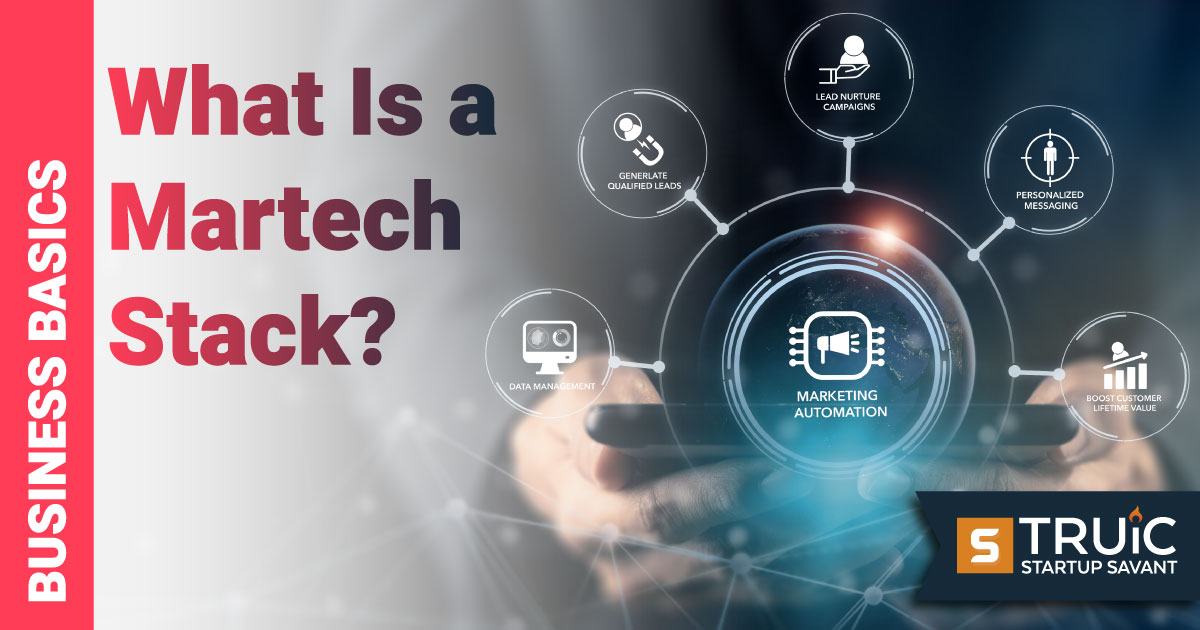What Is a Martech Stack?
Guide to Marketing Tech Stacks

Last Updated: By Mark Shalinsky
In order for a company to compete in today’s marketplace, a certain amount of technology is required. In the last quarter-century, business tools such as CRMs, marketing automation, ERPs, accounting systems, contract systems, and human resources (HR) systems have grown in complexity and necessity. For these reasons, companies have implemented multiple technologies that need to be interconnected; these interconnected and integrated technologies are called a marketing technology stack or martech stack.
What Is the Purpose of a Martech Stack?
Technology stacks, or tech stacks, serve a key purpose; managing and passing information in the form of data between systems. Passing information between systems reduces three key sources of frustration when it comes to data management: human error, data duplication, and increased security.
Humans are error-prone. Add more humans to your organization, and you will include more errors in your data. Having multiple technologies interconnected means that when one human puts in data at one point, it will populate in other systems where it is required. A single source of truth for the original data will dramatically reduce the inclusion of human error in your data.
Concurrently with a single source of truth, if one bit of data is collected in one system connected to the martech stack, it should populate to other systems.
Consider an email address. When used as a unique identifier in a CRM and marketing automation platform, if it is present and a prospect currently in your database completes an online form, the data from that form will be merged with the existing contact data and not create a duplicate entry in the database.
Finally, marketing stacks increase security, as they can provide the relevant information that is stored adjacent to data that needs to be secured. For example, an employee's personal email address is stored in an employee benefit platform next to their Social Security number. The email can be moved to other systems that people with less security clearance have access to, without granting them access to a more secure system.
Components of a Marketing Technology Stack
The components of a simple martech stack would comprise:
- Your website(s)
- A data broker service
- Customer relationship management (CRM)
- Marketing automation platform
These different software platforms usually share their data by application program interface (APIs) to avoid duplication, redundancy, and to increase data accuracy. Again, removing human error and data duplication are key benefits of an integrated marketing technology stack.
More complex technology stacks would comprise the components above with increased interconnectivity to the website and other platforms such as:
- Contract software
- Accounting software
- Sales enablement platforms
- Ecommerce platform
- Phone system
- Analytics dashboard
As you can imagine, a technology stack with multiple nodes, systems, and inputs would require a business applications team to manage them. The business applications team would typically sit above the operations (e.g., sales, marketing, accounting operations) teams who would be responsible for the technology within their department.
Goal of a Marketing Tech Stack
With more and more technology that is integrated and interconnected, the goal of a marketing technology stack is to increase communication between different departments, remove speed bumps during the customer journey, and, to paraphrase Dr. David Vik (a seed investor in Zappos), “allow a company to provide wow to the customer everywhere they can.”
The tech stack does this by allowing marketing and sales operations to load in leads from a data broker, then serve them up to contextually relevant advertisements and content where they are most likely to engage with those advertisements. Through dashboards, the leadership and C-suite can then see the immediate impact of those marketing efforts and point their sales teams to reach out to the most engaged prospects via every channel available to them, be it email, phone, SMS, social media, or even dropping off physical gifts, at scale.
When a deal closes, the customer success team can be fed all the information regarding the purchase and provide a bespoke and effective onboarding process that is more akin to meeting an old friend than being tossed over the fence by a surly sales rep who was content to close the deal and never gave a second thought to helping out their colleagues who had to deliver what they promised (which, unfortunately, is the case more often than not).
When Do Startups Need a Marketing Stack?
The biggest question a startup company asks itself is when do they need a marketing technology stack?
The answer is complicated. Sooner is always better; however, considerations are key. Similar to selecting a CRM or marketing automation, the question is how big do you want your martech stack to grow and how much do you want to spend?
A technology stack is just another way of balancing the universal equation of time, money, and information. The more your company can spend on a technology stack (and the humans to ensure it continues to work well), the more valuable your information will be and the more time your organization will be able to save.
That being said, it is not always required to spend a ton of money on a technology that will allow you to hit your desired revenue goals. There are effective, low-cost alternatives out there. For example, if your company’s main way of attracting new customers is via email marketing, ConstantContact, Mailchimp, or even Customer.io should suffice as an effective marketing automation tool. If your company has a limited total addressable market (TAM), you may not need a beefy sales enablement platform such as Outplay, Outreach, Salesloft, or Koncert. In this case, something like Monday.com, a task management system, could suffice.
In the end, the answer to the question of when your company would need a marketing tech stack is now; however, the real question is how complicated should your tech stack be. The answer to that question is how much you will invest in both time, money, and management to make it work, as a technology stack should easily increase productivity by 10 to 20 times.
FAQ
What is a tech stack?
Technology stacks, or tech stacks, serve a key purpose: managing and passing information in the form of data between systems.
What is martech?
Marketing technology, or martech, leverages the power of technology to provide impactful digital marketing solutions.
What is a marketing tech stack/martech stack?
A marketing tech stack is all the technology used to develop, manage, maintain, and grow a company’s marketing presence. Those technologies can help direct digital marketing efforts such as scoring leads on the website, advertising on various platforms, developing workflows for email marketing campaigns, as well as helping organize and launch social media campaigns. Concurrently, marketing technology can help trigger workflows to send physical items to prospective customers.
What are some tools to include in a martech stack?
A marketing technology typically includes software that measures website engagement, workflows that can triage and push the right content to the right people at the right time, technology that can aid with serving ads to the right audience, engaging your audience with social media, and being able to connect with physical suppliers for drop shipping.
What is CRM?
A CRM is a customer relationship management platform. It helps companies organize the data around their prospects and customers, manage their sales reps' tasks, and help identify and manage sales pipelines.
What is marketing automation?
Marketing automation includes tools that help companies market their products and services to their prospects through actions such as lead scoring, website visitor insight, chatbots, email marketing, social media marketing, landing pages, and click funnels.
How does CRM handle data differently from marketing automation?
CRMs typically segregate contact, account, and opportunity data into separate objects. Marketing automation platforms flatten the data into a single object.
What is the best CRM software?
The most selected CRMs are Salesforce, HubSpot, Monday, and Microsoft Dynamics. However, selecting a CRM is dependent on your needs and may be industry-specific.
What is the best marketing automation tool?
The best marketing automation tool is one that will help fulfill your goals as a digital marketer. For each person and each company, there are different utility and functionality needs. One organization may need a full marketing automation platform that can handle email marketing, digital campaigns, landing pages, and click funnels, whereas another, possibly similar organization, would need only a chatbot on their site to be successful.


